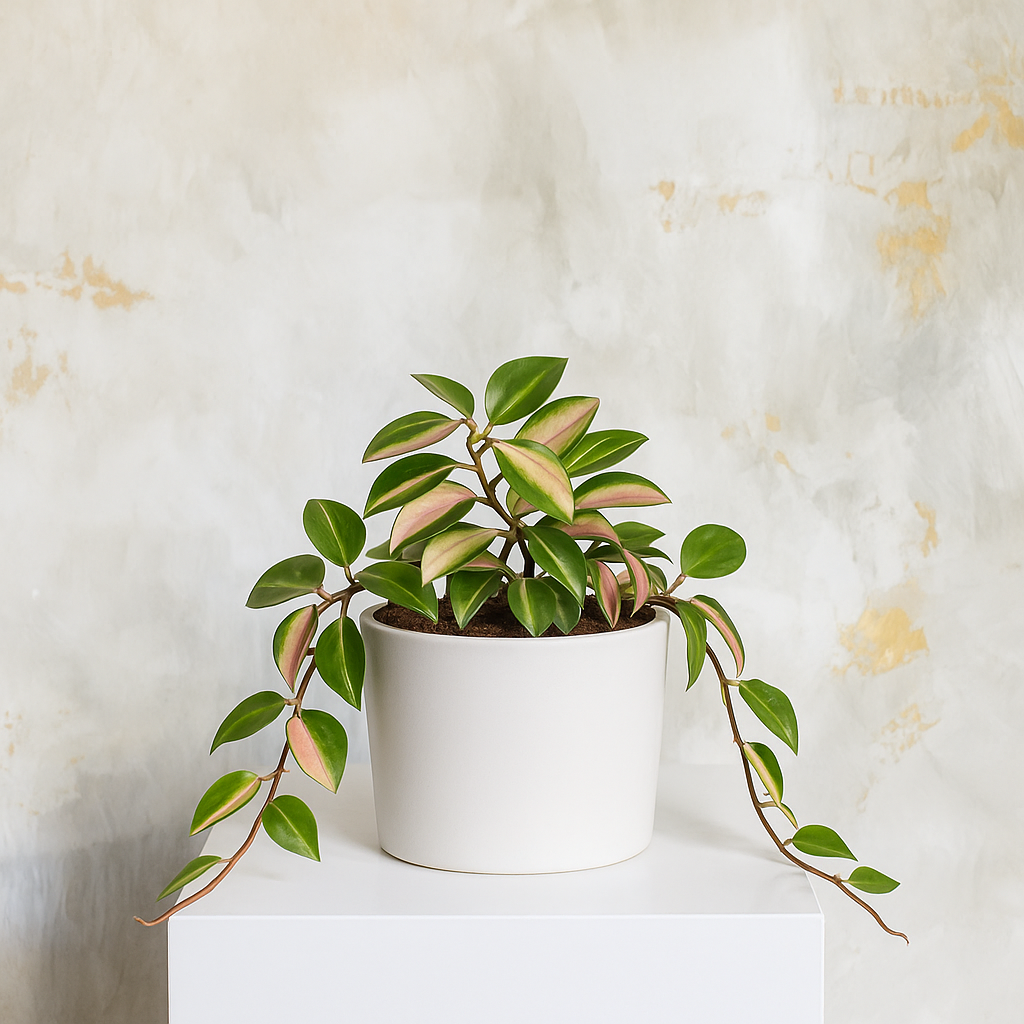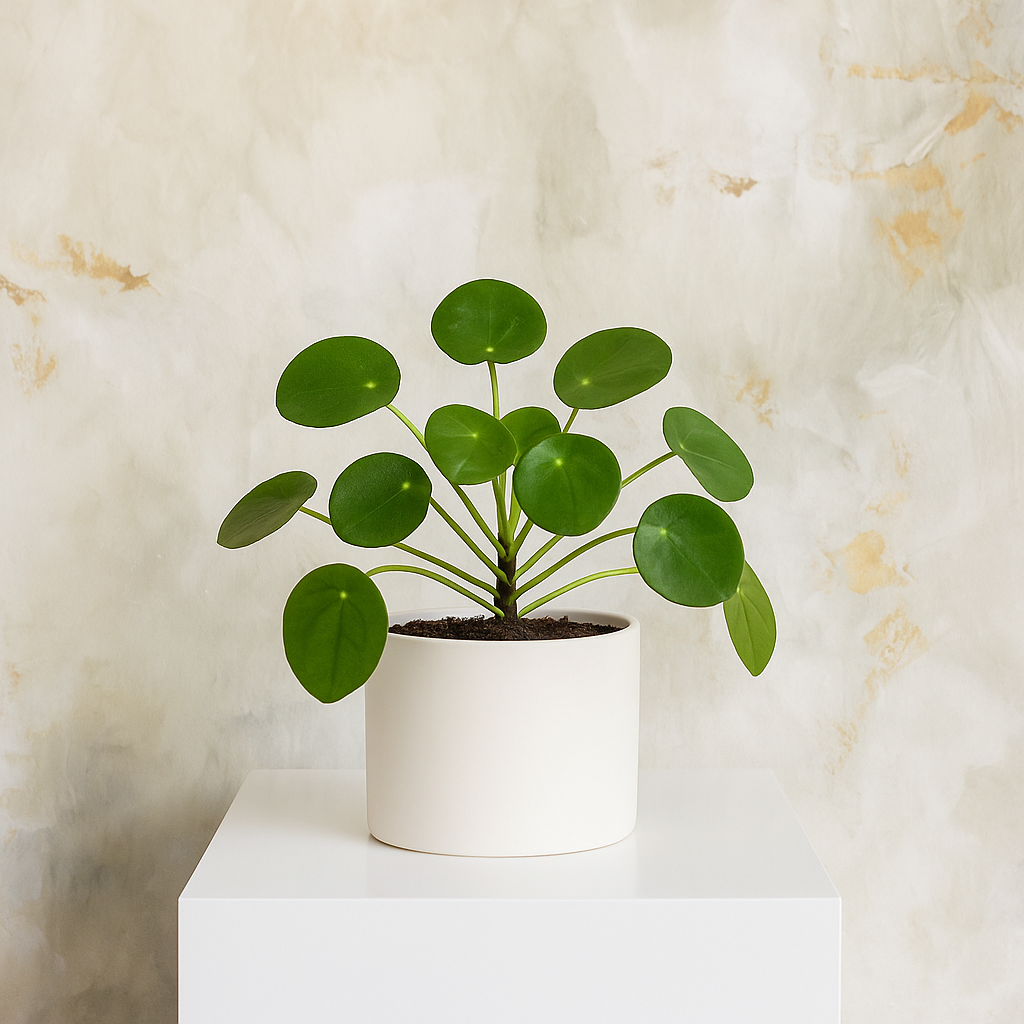
Hoya (Wax Plants)
With their thick, waxy leaves and cascading vines, Hoya plants are both elegant and hardy, making them a favorite among indoor plant lovers. Native to tropical and subtropical Asia and Australia, Hoyas are known for their trailing growth habit and clusters of star-shaped, fragrant flowers. Their fleshy leaves store moisture, making them tolerant of occasional forgetfulness.
Pet Safe
Most Hoya species are non-toxic to pets and children, making them a great choice for pet-friendly homes. However, always confirm the specific variety, as there may be exceptions.
Light
Hoyas thrive in bright, indirect light. They can tolerate a bit of direct morning sun, especially in east or south-facing windows, but harsh afternoon rays may scorch their leaves. Variegated varieties typically need more light to maintain their color. Hoyas may bloom best when exposed to consistent light and a bit of stress (like being slightly root bound).
Water Requirements
Allow the top 2 inches of soil to dry out before watering. In general, Hoyas prefer to dry out a bit more between waterings than many tropical plants, especially in winter. Good drainage is essential, avoid letting the roots sit in water. They enjoy moderate humidity, but adapt well to typical indoor conditions.
Watch out for…
Overwatering is the most common issue, yellowing leaves and root rot can occur if the soil stays too wet. On the flip side, very wrinkled leaves may indicate the plant is too dry. If your Hoya isn’t blooming, try giving it a bit more light and letting it get slightly root bound. Avoid cutting the long tendrils because they will produce new leaves or flowers over time!
Similar care to…
Hoya plants share care characteristics with Pothos, Peperomia, and String of Hearts, all of which enjoy bright light, light drying between waterings, and trailing growth habits.




Leave a comment
This site is protected by hCaptcha and the hCaptcha Privacy Policy and Terms of Service apply.